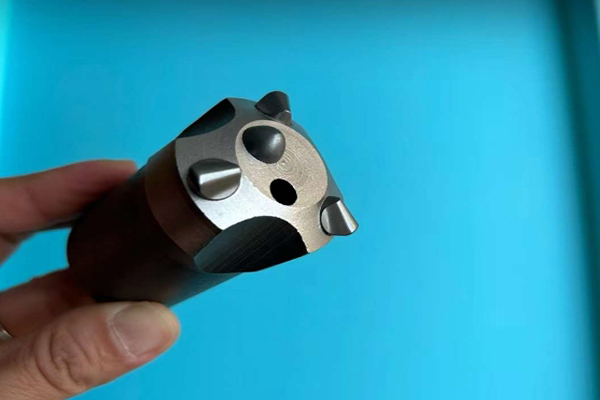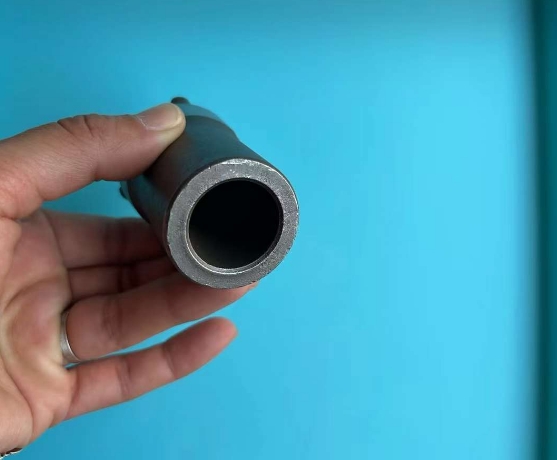In-depth understanding of ball-tooth rock drill bits
Ball-tooth drill bits are widely used tools in drilling, mining and other engineering operations.
1. Structural features
Ball-tooth design The main feature of a ball-tooth drill bit is that its head is inlaid with balls. These balls are generally made of cemented carbide, such as tungsten carbide. The shape of the ball tooth is similar to a part of a sphere, which enables the ball tooth to exert greater pressure with a smaller contact area when it contacts hard materials such as rocks. For example, in open-pit mining, when the ball-tooth drill bit impacts the rock, the ball teeth are like small "breakers", which concentrate the local stress of the rock, making it easier to crack and break the rock. Drill body The drill body is usually made of high-quality steel, which plays the role of supporting the ball teeth. The design of the drill body must ensure sufficient strength and toughness to withstand the impact and torque during drilling. Its structural forms are diverse, including integral and combined types. The integral drill body is a ball tooth directly inlaid in a complete drill bit; the combined type is a cutting structure with ball teeth and the base of the drill bit combined by a special connection method, which is convenient for replacing damaged ball teeth. Chip grooves Ball-tooth drill bits are also designed with chip grooves. During the drilling process, the broken rock debris needs to be discharged in time, otherwise it will affect the drilling efficiency of the drill bit. The shape, size and number of chip grooves vary depending on the size and purpose of the drill bit. For example, in the ball-tooth drill bit for oil drilling, the design of the chip groove should take into account that the cuttings are smoothly returned to the ground from the bottom of the well under the carrying of the drilling fluid, and its spiral chip groove can guide the cuttings to rise with the flow direction of the drilling fluid.

2. Working principle
The impact crushing ball-tooth drill bit mainly crushes rocks by impact. On some mining equipment, such as rock drills, the impact force is generated by the reciprocating motion of the piston and transmitted to the ball-tooth drill bit. When the ball tooth contacts the rock, due to the high hardness of the cemented carbide material of the ball tooth, the impact force can be effectively transmitted to the inside of the rock, causing the rock to be broken. For example, in tunnel excavation projects, the impact frequency and impact force of the rock drilling trolley using the ball-tooth drill bit can be adjusted according to the hardness of the rock. For granite with higher hardness, higher impact frequency and greater impact force are required to enable the ball teeth to effectively break the rock. Shearing crushing In addition to impact crushing, the ball tooth drill bit also generates shear force during the rotation process. When the drill bit rotates, the relative movement between the ball teeth and the rock enables the ball teeth to shear and crush the rock. This shearing action is more effective for crushing some rocks with layered structures or low brittleness. For example, when mining shale, the rotary shearing action of the ball tooth drill bit can crush the shale along the bedding plane, improving the mining efficiency.
3. Application field
Mining In metal and non-metal mining, ball tooth drill bits are widely used for drilling blastholes. For example, in iron ore mines, it is necessary to use a ball tooth drill bit to drill a blasthole of a certain depth and diameter on the ore body, and then load explosives for blasting, so as to strip the ore from the ore body. For ores of different hardness, ball tooth drill bits of different specifications and materials will be selected. For ores with higher hardness, ball tooth drill bits with higher ball tooth hardness and greater drill body strength will be used. In the construction of building foundations, such as the drilling of pile foundations, ball-tooth drill bits can be used to drill various strata, including soil, sand and rock layers. When encountering rock strata, ball-tooth drill bits can effectively break the rocks to ensure the smooth drilling of pile holes. For example, in the pile foundation construction of high-rise buildings, ball-tooth drill bits can drill pile holes that meet the design requirements on hard bedrock, providing a solid support for the foundation of the building. Oil and gas drilling In the exploration and exploitation of oil and gas, ball-tooth drill bits are an important drilling tool. When drilling into underground rock layers, ball-tooth drill bits can adapt to strata of different hardness and complex structures. It can break common reservoir rocks such as sandstone and limestone, helping oil workers obtain oil and gas samples, as well as subsequent mining operations.
4. Advantages and limitations
Advantages Good wear resistance: Since the ball teeth are made of carbide material, their wear resistance is much better than that of ordinary steel-tooth drill bits. During long-term drilling operations, the ball teeth can maintain a good shape and cutting performance, reducing the number of frequent drill bit replacements and reducing operating costs. Strong adaptability: ball-tooth drill bits can adapt to a variety of different hardness and types of rocks. Whether it is hard granite or relatively soft sandstone, ball-tooth drill bits can effectively perform drilling operations by adjusting drilling parameters (such as impact energy, rotation speed, etc.). Limitations High cost: Because the ball teeth are made of cemented carbide and the manufacturing process of the drill bit is relatively complex, the cost of ball-tooth drill bits is higher than that of ordinary drill bits. This to a certain extent limits its application in some small projects with strict cost control. High operating requirements: During the use of ball-tooth drill bits, it is necessary to reasonably adjust the drilling parameters according to different rock properties and drilling requirements. If the parameters are not adjusted properly, it may cause problems such as excessive wear of the ball teeth, damage to the drill bit, or low drilling efficiency.





